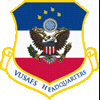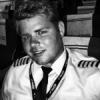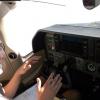How to plan a flight across the southern atlantic
#1
Posted 07 April 2011 - 05:58 AM
I have been given the assignement to plan a flight with a Boeing 777-200ER from Santiago (chile) to Amsterdam (the Netherlands).
I found some standard routes from east Brasil to the Canary Islands west of Morocco. However, I have not been given the maps for those regions, so I want to plan the flight straight across the atlantic ocean (from Suriname to Spain).
I believe that I am free to plan my flight whatever way I want it there, because there is no Track system. Is there anything I should take into account concerning the leg distance? Or can i just fly a long straigt line into Europe?
many thanks,
Rowlus (netherlands)
ps. I am studuing Aviation Engineering, this is a project assignment.
#2
Posted 07 April 2011 - 06:12 AM
#3
Posted 07 April 2011 - 07:46 AM
Visit flightaware.com and put in random transatlantic routes, you'll get to see the route filing..
#4
Posted 07 April 2011 - 08:28 AM
But the intersections, do you use them like normal waypoints? I mean, how do I know what intersections to file in a flight plan?
#5
Posted 07 April 2011 - 09:04 AM
 Rowlus, on Apr 7 2011, 07:28 AM, said:
Rowlus, on Apr 7 2011, 07:28 AM, said:
But the intersections, do you use them like normal waypoints? I mean, how do I know what intersections to file in a flight plan?
A lot of people just use a web-based flight planner, and many stand by this one: http://rfinder.asalink.net/free/ Play with it and see what you can come up with
#6
Posted 07 April 2011 - 09:39 AM
While the north Atlantic has tracks that change twice a day every day (and are only one-way...east at night, west in the day), the south Atlantic is a little more standardized. They have multidirectional routes (with named waypoints) that take you from the Brazilian coast, up along the western side of Africa and then into Europe. You'd plan the first and last parts of the flight using charts for South America and Europe just like you would any non-oceanic flight. You'd plan to fly to one of the coast out fixes by Brazil, and then take the oceanic routing to a coast in fix near Spain. Below is a chart of some of the routes across the south Atlantic. I cant help you out with where to get the other charts for South America/Europe...maybe someone else can?
Here's a few other things youll want to keep in mind for a flight like this:
1. There's no radar over the middle of the ocean, so you'll have to make position reports via HF radio or, if youre in a 777, most likely CPDLC (Controller Pilot Data Link Communications) will be doing it automatically.
2. You'll want to know an equal time point (several of them actually). Basically, if something were to happen where you need to land ASAP, you need to know the point where it is faster to keep going straight or turn around and go back the way you came. I'm not sure how in-depth your professor is expecting it to be, so if you'd like me to elaborate on this I can.
3. It is important to arrive at points when you say you are. The airspace (especially in the north Atlantic) is very congested with lots of airplanes flying the same exact routing, and some at the same exact altitude. You'll have to plan deconfliction with these other aircraft, and that if there is a chance you may overtake the guy in front of you, that you're at a different altitude.
Hopefully that gives you a good start! If you have any other questions, feel free.
-Chris
(I shrank this image down a little bit, so if you want the full-size shoot me a PM and I can email it to you PDF style.)
_7Y9N2.jpg)
#7
Posted 07 April 2011 - 11:44 AM
Thanks alot for this info, it's very useful! I have to ask my professor if I am allowed to use this map, since it was not originally delivered in the assignment pack that we received. I have maps for Chile, Bolivia, Peru, the Northern part of South Amerika, the atlantic ocean (minus the airspaces Atlantico and Recife, both Brasil), and all of Europe. These maps were officially provided by Air France, and are original official maps. The professor stated that these were enough to plan the whole flight, hence my question of taking other routes than those shown on your map.
Anyway, I think I can get alot further now, so thanks very much!! If or when I come up with new questions I'll be sure to post them here
Rowlus
By the way, the assignment does go as deep as flightplanning can go
So yeah, it's a pretty tough assignment. Very interesting though, but there is so exemely much information to be found, that sometimes I just loose track
#8
Posted 07 April 2011 - 12:01 PM
 Flying_Pie, on Apr 7 2011, 10:04 AM, said:
Flying_Pie, on Apr 7 2011, 10:04 AM, said:
A lot of people just use a web-based flight planner, and many stand by this one: http://rfinder.asalink.net/free/ Play with it and see what you can come up with
Ever been taught to plan a real flight?
#9
Posted 07 April 2011 - 03:34 PM
#11
Posted 07 April 2011 - 04:28 PM
 Pattyboy10, on Apr 7 2011, 12:46 PM, said:
Pattyboy10, on Apr 7 2011, 12:46 PM, said:
#12
Posted 07 April 2011 - 05:16 PM
#13
Posted 07 April 2011 - 05:35 PM
 Pattyboy10, on Apr 7 2011, 04:46 PM, said:
Pattyboy10, on Apr 7 2011, 04:46 PM, said:
I was referring to his experience as a pilot in general
 Flying_Pie, on Apr 7 2011, 04:34 PM, said:
Flying_Pie, on Apr 7 2011, 04:34 PM, said:
No worries. I just wanted to point out that it's entirely different than on FS compared to reality. Similar principles, but if you're going to conduct a real flight plan, you need to have accurate details of the aircraft performance specifications. The ones in FS won't cut it, and you can't use the real specs to plan a flight in FS, just as you can't use an FS aircraft's specs to plan a flight in reality.
#14
Posted 07 April 2011 - 11:32 PM
 Rowlus, on Apr 7 2011, 12:44 PM, said:
Rowlus, on Apr 7 2011, 12:44 PM, said:
Well in that case, here's a page from our in flight guide for calculating equal time points. Might help ya out with that. Important if that engine failure just happens to be over the water
_aVx0O.jpg)
 Peter797, on Apr 7 2011, 06:16 PM, said:
Peter797, on Apr 7 2011, 06:16 PM, said:
Thanks dawg!
#15
Posted 08 April 2011 - 09:53 AM
There will be NO active airline pilot that can reproduce that formula hehe.
I use this one, just to check the FP
Distance PET = (TripNm x GS back) / (GS out + GS Back)
Time to PET would then be: Distance PET / GS Out.




















